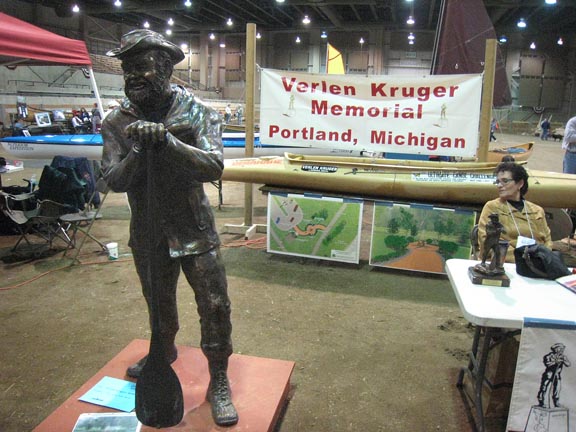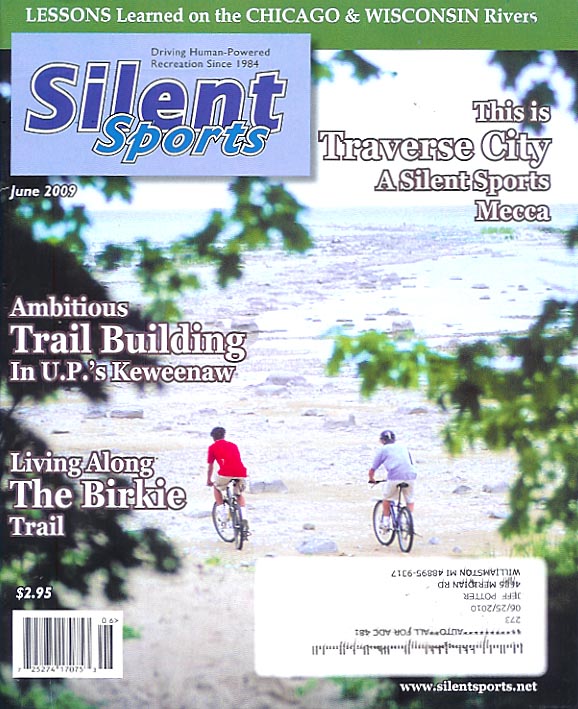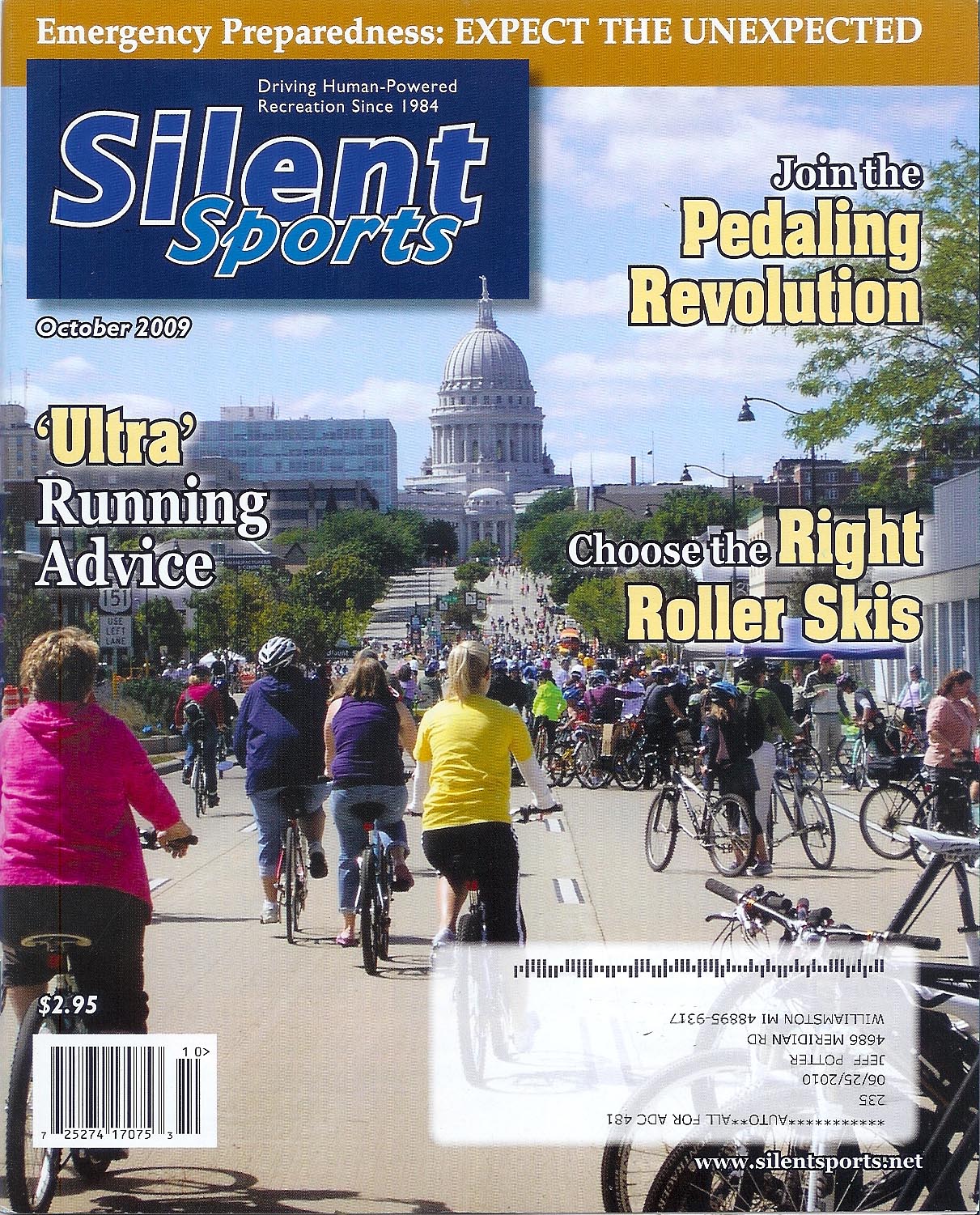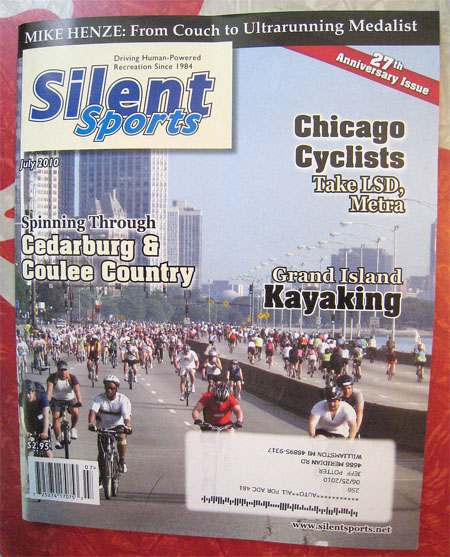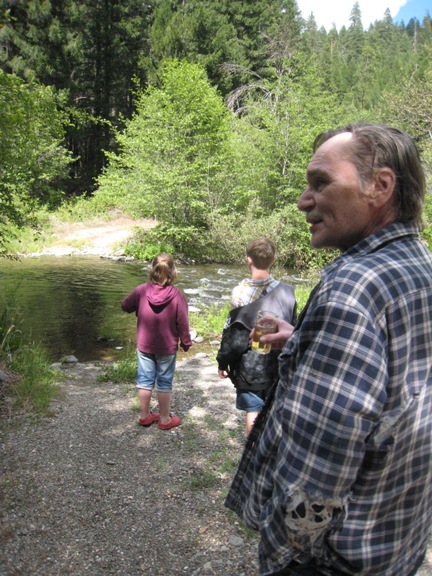More Photos Below!Gallery
The Quietwater Symposium at MSU is Michigan’s neatest — and onliest — general “quiet-type” outdoor sports event. It’s also in March and is a fun cabin-fever prevention day. The next weekend always sees Madison, WI, host its mammoth biz-oriented Canoecopia. The MSU event is also unique in that it’s the only university-hosted outdoor “trade show” — it keeps a dominant educational aspect. There are 100+ booths of all kinds, with nonprofits getting major (affordable) floorspace. It’s a lowkey event, overall, with friendly Michigan style.
The QWS had a change of venue this year — it moved to the other side of the Pavilion and occupied the huge dirt-floor arena for the first time (the heritage farm animals people usually show there). The change let more sailboat folks set up larger displays and do more on-site wood-sawing.
Kevin Finney and Erik Vosteen are dynamite major players in the diverse primitive skills scene in Michigan. They displayed their buns off all day in the dirt-floor pavilion. They had primitive-made dug-out canoes on display and an ongoing screening of Kevin’s new documentary about Potawatami ash basket making … and it’s soon-to-be disappearance, thanks to the beetle.
There were dozens of sea kayak displays by homebuilders — I always love seeing these, with all the skinboats and unique concepts — like an inflatable greenland style — that people are involved with.
A major highlight for me was the keynote presentation by the McGuffins of their multi-world project of finding painting sites used by the 1920’s Group of Seven painters of Canada. I always like it when worlds merge. They’re more than the sum of their parts. The Group of Seven is a rock-star movement where nature painting took on world status in modern art. Of course, Tom Thomson is their mysterious godfather. He was a woods kid who came to Toronto to study art and ended up bringing his city friends north to the woods where they created a bold, colorful style that uplifted Canada ever after. I’m sure glad that I encountered it! Heck, it was only about 5 years ago that I did. So, even a curious type can go a long time down here in the States without learning about them.
The McGuffins (Joanie, Gary and their daughter) are ambassadors of family canoeing and nature photography in Ontario. (Gary’s main tip to me for photography: “use a tripod — it makes you think and makes every photo better.”) They’ve done numerous big, long canoe adventures around the waterways of their province. With this Group of Seven project they’re finding old-timers and researching the exact spots where the painters worked and looked. It takes a lot of portaging, bushwacking and trail and error, but there were repeated emotionally stirring moments for me in their presentation when Gary showed photos that you could superimpose the famous paintings, even series of them, over. These were locations — ignored until now by the general public — that the painters would sometimes come back to repeatedly. The effort brought them alive for me in a new way.
The Agawa Canyon train can be used to access several sites. This is the same train the painters used. And it will still stop wherever you like and drop you off, then pick you up again when it comes back through and sees your flag.
A neat thing, too, is that the McGuffins simply want to publicize this cultural resource and help create a map of sites which Canada will use to encourage anyone to include on their trips.
Their booth space was set up with a bunch of large-scale blow-ups of paintings and photos. They said that this was a new kind of project for them. Kudos to stretching, sez me! : )
OYB had a different booth experience from last year. Last time I brought a bunch of my homestyle bike luggage…and sold out. Not much interest in my hard-to-find outdoor books bookshelf and table. This year I didn’t get my luggage act together and displayed only books, magazines and other media. Lo and behold, folks really seemed to dig the vintage outdoor books side of things. …Maybe it’s all in the display. Last year I had a bike dressed with bags out front. This year it was a bookshelf. Who knows, maybe I would’ve rocked both sides of the project if I’d had the luggage out the whole time. I did finally put up a display with my three big osage “elk antlers” taped together to form a tripod and luggage hanging all over it. Such interactions with the public are neat because they always get me to thinking about what OYB means to people and how to present the message simply and what to do to be of best service.
I noticed that there is another outdoor book dealer at the show. They have far more books than I do, and a wonderful selection, largely of rare material. They’re strictly book dealers. This made me ponder then realize that OYB is a bookstore…and more. It’s a catalog with editorial content. How to present the situation in a meaningful way? I realized that I was actively working to preserve certain kinds of outdoor lore — the culture side, mostly — and that no one else (it seems) was actually working and trying to keep all that alive and in play. This added something, for me, to my ideas of what OYB is. I’ve always wanted it to be a community, a place where like-minded folks can hang out and share a wide range of info and stories, rather than a specialty joint. So far, that part of the mission has flopped. People want specialty media. Even though regular folks are kept out of general media. I still think that regular people could dig a broad based view, or sharing, of their worlds. Who knows!
I do enjoy the QWS…
It would be fun to keep the ball rolling and head across the pond to Canoecopia next year, though! That’s the show that all the big companies display at. It has to be an eyeful! Can OYB add anything to it?
I don’t mean OYB to be just a Michigan thing — and, indeed, it’s not, at least in terms of sales: I’d say that 90% of OYB customers are out of state. But I’d say that QWS is 99% from in-state. Yet likely only a few percent at Canoecopia are from here. Our worlds don’t cross much, due to the painful drive-around thru Chi. (Or the slow, pricey ferries.)
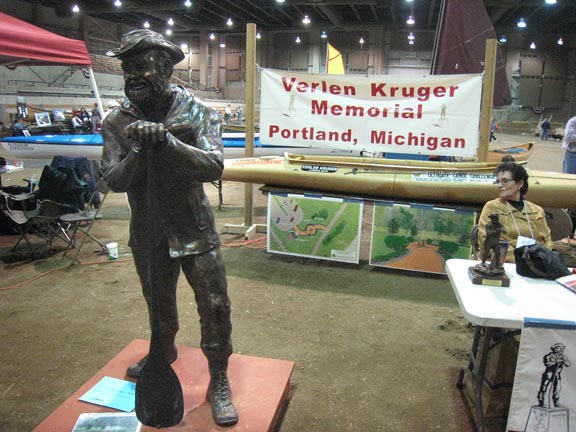
Verlen’s bronze memorial statue.
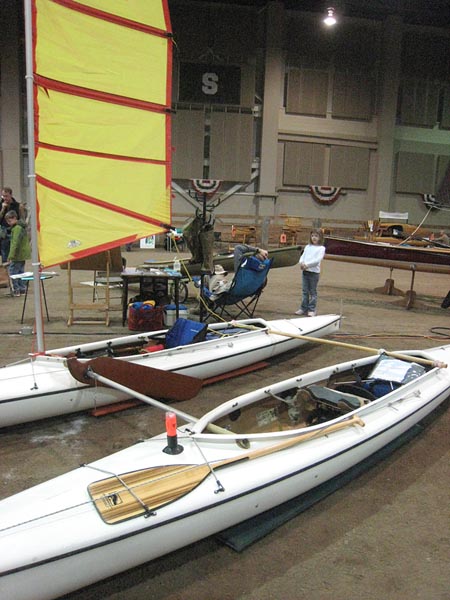
A catamaran rig of Kruger boats.
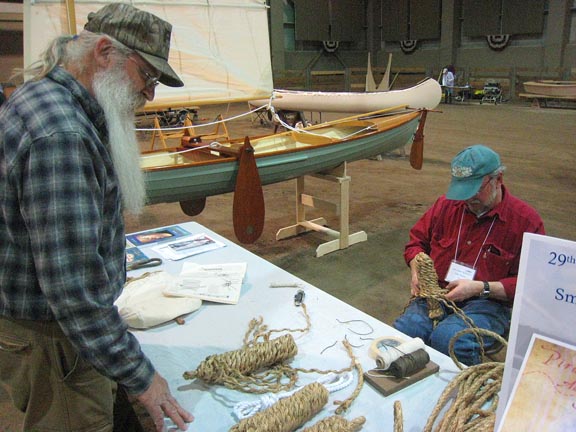
Ropes.
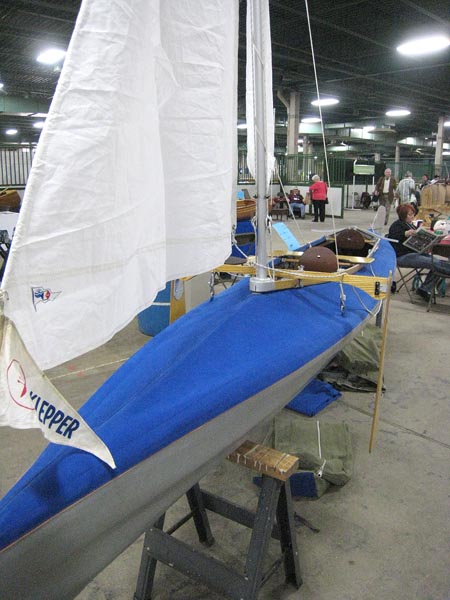
Ye olde Klepper folder.
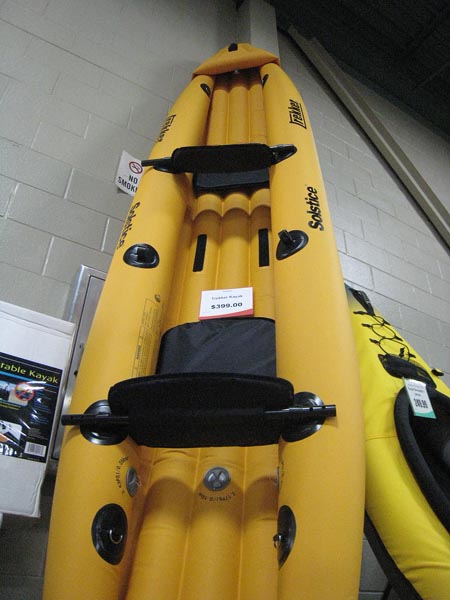
Decent looking thrifty inflatable.
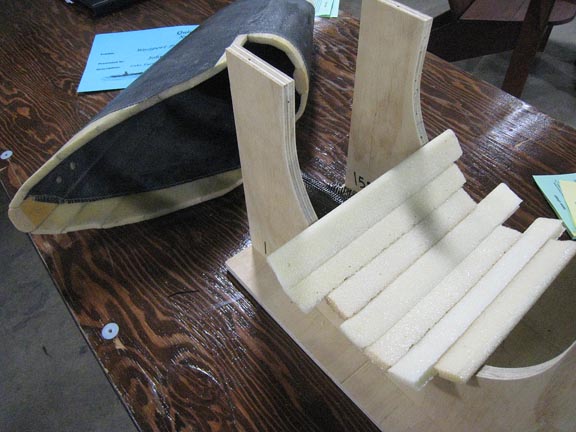
One hobbyist was working with foam and carbon, making boats…and furniture… with it.
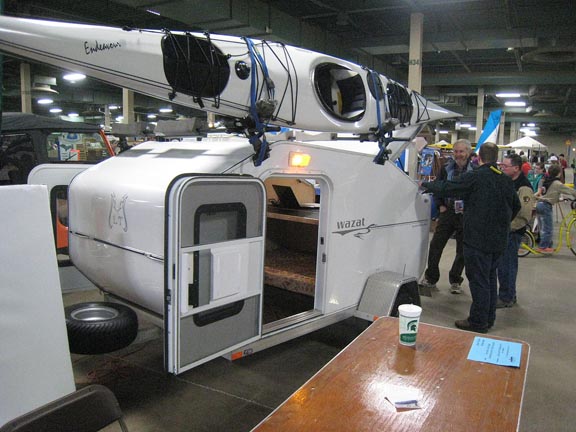
Mini-trailer rig.
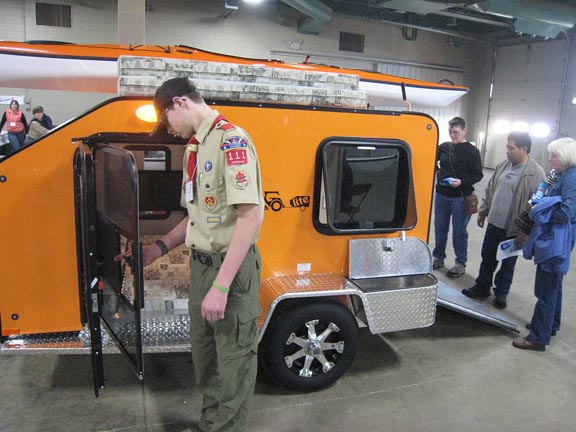
Mini-trailer rigs on parade.
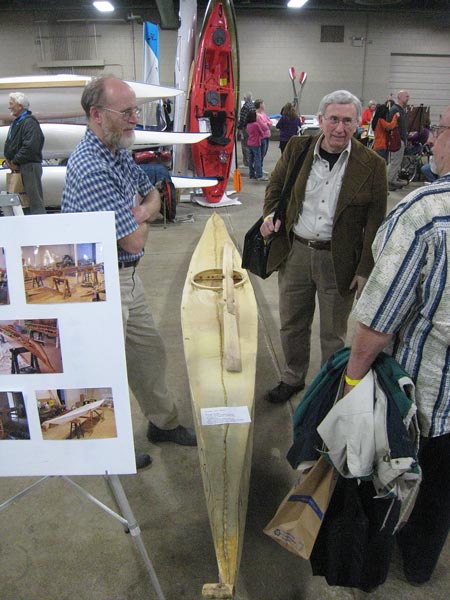
Nice skin boat.
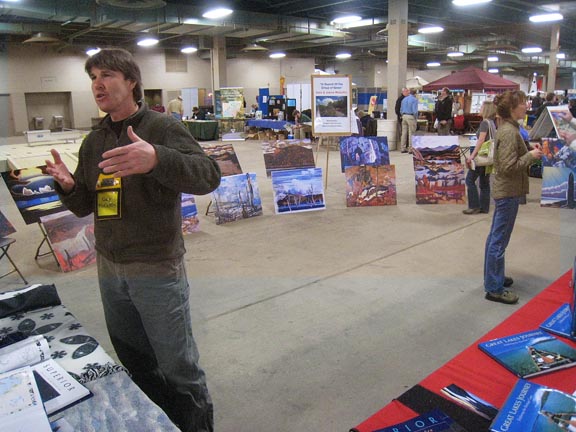
McGuffins following the trail of the Group of Seven painters.
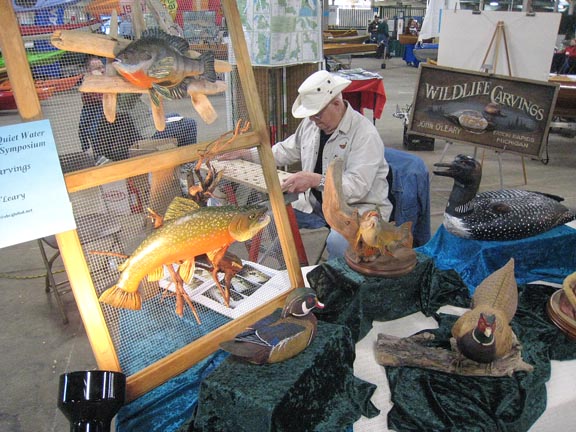
Wood crafter. Highly skilled.
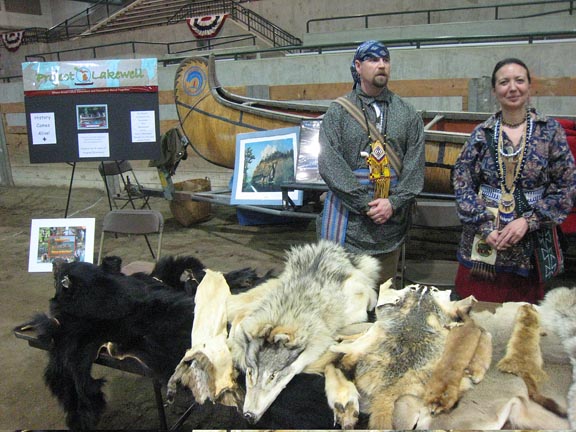
Primitive skills folks.
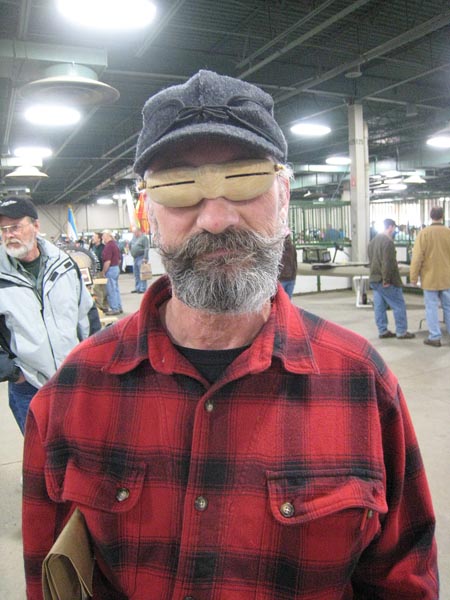
Typical QWS attendee.
